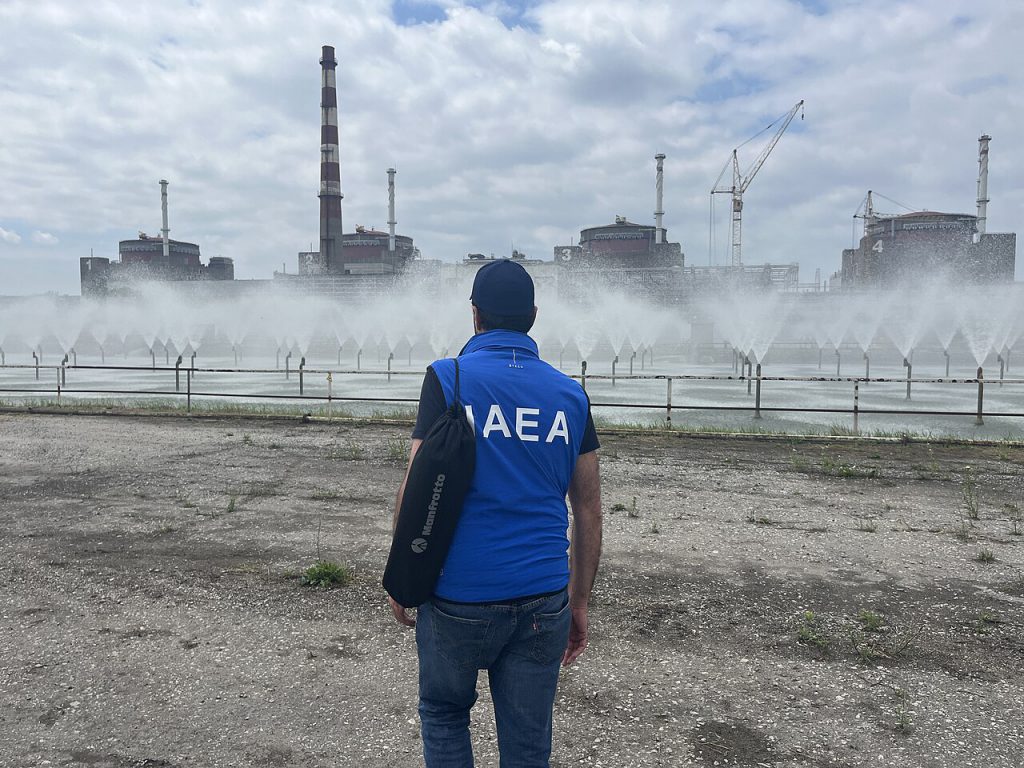Ludovica Castelli explores the longstanding problem of how to protect nuclear facilities against attacks — particularly in light of the war in Ukraine and rising tensions in the Middle East. Until states establish a comprehensive, enforceable legal framework, nuclear facilities will remain vulnerable to attack, perpetuating the risks to international security and humanitarian safety
In recent years, kinetic attacks on nuclear facilities have re-emerged as a pressing international security concern. This has reignited the persistent security, humanitarian, and environmental risks uniquely associated with such events. Director General of the International Atomic Energy Agency (IAEA) Rafael Grossi has emphasised repeatedly that 'attacking a nuclear facility is an absolute no-go'. Yet, such incidents continue to occur with impunity.
On the night between 12 June and 13 June 2025, Israel launched a series of airstrikes targeting key components of Iran’s nuclear and military infrastructure, including nuclear facilities, senior IRGC military leadership, and nuclear scientists. In its initial statement, the Israel Defense Forces (IDF) referred to the operation — codenamed Operation Rising Lion — as 'a preemptive, precise, combined offensive to strike Iran’s nuclear program'. While Israel has yet to articulate a clear legal justification for Operation Rising Lion under international law, Prime Minister Netanyahu’s speech appeared to gesture toward the rationale of preventive self-defence — the use of force in anticipation of a non-imminent future threat, whether nuclear or conventional. This doctrine, rejected under international law, underpins what is historically known in the Israeli context as the Begin Doctrine.
Meanwhile, the war in Ukraine continues to expose the vulnerabilities of nuclear facilities in conflict zones. Russia's repeated attacks on Ukraine’s Chornobyl and Zaporizhzhya nuclear facilities, coupled with the latter's prolonged military occupation, have remained focal points of European security discourse for the past three years.
Contemporary political responses to the longstanding issue of attacks on nuclear facilities face numerous unresolved technical and political challenges. Chief among these is the implicit legitimisation of attacks on military nuclear facilities as a counterproliferation strategy.
Over time, governments have progressively framed the use of military and other coercive means as counterproliferation strategies essential to preserving the global nonproliferation regime. This approach, however, has eroded the integrity of the IAEA’s safeguards system and the Non-Proliferation Treaty (NPT) itself.
The implicit legitimisation of attacks on military nuclear facilities as a counterproliferation strategy has progressively undermined the integrity of the IAEA's safeguards system and the NPT
At the same time, political responses have upheld the latitude to undertake attacks when deemed necessary. This, in turn, has reinforced resistance — especially from the most influential members of the international community — toward crafting a blanket ban on attacks against civilian nuclear installations. Unlike regional agreements such as the Pelindaba Treaty or the India-Pakistan Non-Attack Agreement, this deliberate apathy forces organisations like the IAEA to rely on ad hoc and temporary solutions to safeguard nuclear facilities in conflict zones and areas at risk of conflict.
The international community has long recognised the need for international cooperation to protect installations containing hazardous materials. As early as 1956, the International Committee of the Red Cross introduced a specific article in its Draft Rules for the Limitation of the Dangers Incurred by the Civilian Population in Time of War which would grant immunity – under jus in bello – to 'works or installations containing dangerous forces, namely dams, dykes and nuclear electrical generating stations'.
However, it wasn't until 1977 that Article 56 of Protocol I and Article 15 of Protocol II to the Geneva Convention were formally adopted, establishing the only legal basis protecting nuclear power plants during armed conflict. Yet, all attacks against nuclear facilities since World War II have occurred after the adoption of Protocols I and II, raising critical questions about their efficacy.
Despite the adoption of Protocols I and II in 1977, which provide the legal framework for protecting nuclear power plants, attacks on nuclear facilities have continued. What explains this?
Closer examination of Articles 56 and 15 reveals that they provide limited protection to selected nuclear installations, under specific circumstances. Both Articles refer only to ‘nuclear electrical generating stations,’ thereby confining such protection to specific nuclear facilities designated for peaceful purposes. This, of course, leaves others, such as research reactors, unprotected. Additionally, protection is conditional: it ceases if an attack is the only feasible way to terminate direct support of military operations and if there is no deliberate effort to weaponise radioactive dispersal.
This deliberate complexity, as US Deputy Assistant Secretary of Defense Walter Slocombe noted in a 1977 report on the US position on Protocol I, 'was necessary to adequately preserve essential military requirements while still preserving a degree of protection'. Recognising these limitations, Paragraph 6 of Protocol 1 urges High Contracting Parties to conclude further agreements 'to provide additional protection for objects containing dangerous forces'.
During the 1980s, as attacks on nuclear facilities became more frequent, Sweden led efforts to integrate nuclear facility protection into Radiological Weapons Convention negotiations. However, European Community members opposed the Swedish proposal, viewing it as overly ambitious and an obstacle to broader arms control discussions. By the 1990s, diplomatic momentum had faded entirely.
Despite EU efforts to reinforce the nuclear security regime, recent events have once again highlighted the inadequacy of the existing protection for nuclear facilities
Forty-four years on from the Swedish proposal, the nuclear security regime is still tainted by the same restricted scope, and the same ‘relativism’ that allows military officials to suspend protection at their subjective discretion.

Despite ongoing attacks on the Zaporizhzhya nuclear power plant, and on Iranian nuclear facilities, international discussions on strengthening protection remain stagnant. The Swedish proposal has been abandoned, the NPT Review Conferences have yielded little progress, and Paragraph 6 of Protocol I remains an unfulfilled pledge.